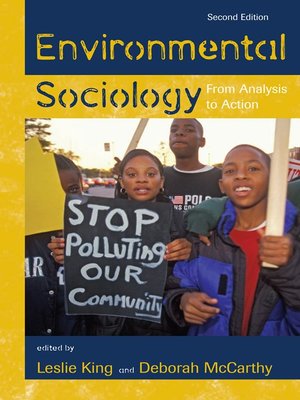
Sign up to save your library
With an OverDrive account, you can save your favorite libraries for at-a-glance information about availability. Find out more about OverDrive accounts.
Find this title in Libby, the library reading app by OverDrive.



Search for a digital library with this title
Title found at these libraries:
| Library Name | Distance |
|---|---|
| Loading... |
A third edition of this textbook is now available.
This environmental sociology reader emphasizes utilizing the sociological imagination to examine the race, class, gender, and other power dimensions that intersect environmental issues. It includes excerpts from recently published pieces that use various sociological perspectives, especially critical frameworks, to examine a wide range of topics-from the globalization of hazardous wastes and industries to mountaintop removal for mining to the construction of nature in a television sitcom.
This second edition, like the first, aims to engage undergraduate students, and includes nine new selections chosen from recent work. A section on social constructionism has been added, and the section on science, risk, and health has been expanded to mirror the increased interest in that field. The new edition also includes a chapter on climate change and new selections in the section on "Thinking about Change/Working for Change," which helps students see how individuals can affect the future of the planet through their actions.
This environmental sociology reader emphasizes utilizing the sociological imagination to examine the race, class, gender, and other power dimensions that intersect environmental issues. It includes excerpts from recently published pieces that use various sociological perspectives, especially critical frameworks, to examine a wide range of topics-from the globalization of hazardous wastes and industries to mountaintop removal for mining to the construction of nature in a television sitcom.
This second edition, like the first, aims to engage undergraduate students, and includes nine new selections chosen from recent work. A section on social constructionism has been added, and the section on science, risk, and health has been expanded to mirror the increased interest in that field. The new edition also includes a chapter on climate change and new selections in the section on "Thinking about Change/Working for Change," which helps students see how individuals can affect the future of the planet through their actions.







